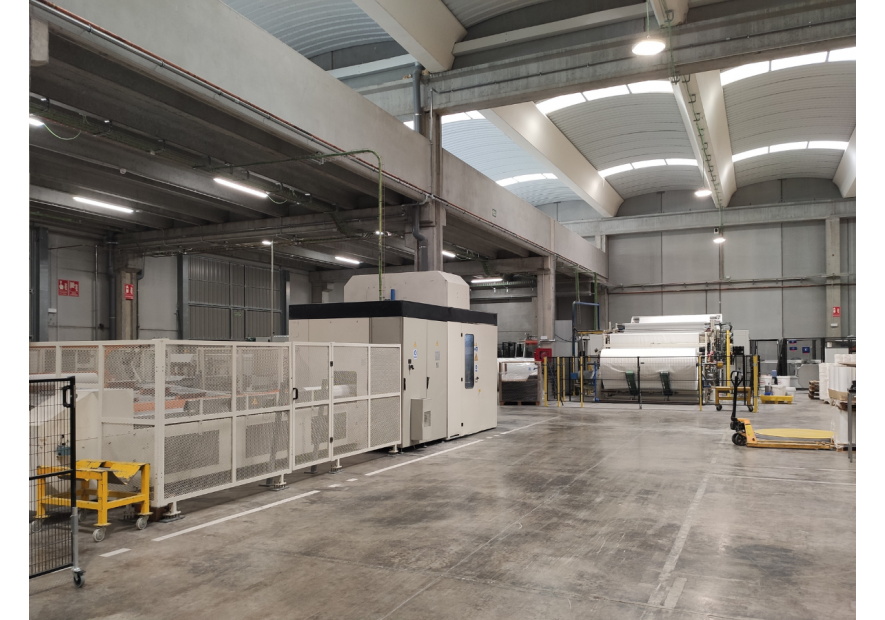The paper industry is an important sector of the Spanish economy, made up of some 1,640 companies that employ more than 44,000 workers. In general terms, the paper value chain begins in the pine and eucalyptus plantations dedicated to the production of wood, continues with the manufacture of cellulose pulp and paper, and ends with the transformation of paper into various products such as packaging, writing paper or tissue paper. After consumption, these products are recycled in the paper mills, constituting 61% of the raw materials used in the manufacture of paper and cardboard.
Regarding the geographical distribution of the sector, it is in the regions of Catalonia, Valencia and Aragon where it has a greater presence within the country.
Changes in consumer habits derived from the increase in digitization have caused a structural transformation in the paper industry. Thus, the production of cardboard and other types of paper products for packaging has not stopped growing in recent years. In this sense, investments in the pulp and paper industry have been increasing, with investments worth €1,754 million made in the last 5 years. It is a sector in continuous transformation that is focusing on markets with greater growth potential such as containers and packaging, and towards products with greater added value such as special papers for a wide and growing range of applications.
The paper sector and the circular economy
Of the almost 6.9 million tons of paper consumed in 2022, 5.3 million were used in the production of new paper. In fact, around 64% of the paper used in Spain is collected for subsequent recycling, which represents a collection rate after use that is considerably higher than that of other materials. This characteristic, in addition to its biodegradability, gives paper the potential to be able to replace other less sustainable materials such as plastic in some applications, which can lead to growth in the paper industry in the world. future.
National production in figures
The tissue paper business in Spain has been shaped by the economic challenges the country has faced since 2007. The great global recession that It began 12 years ago and disproportionately affected Spain’s economy.
According to ASPAPEL (Spanish Association of Manufacturers of Pulp, Paper and Cardboard) global production in the pulp and paper sector grew by 6.5% in 2021, clearly above pre-pandemic levels. Specifically, 7.7% (1,777,000 tons) of cellulose and 6.2% (6,658,900 tons) of paper and cardboard.
All major paper groups saw their production increase in 2021. The greatest growth was experienced by special papers and graphic papers, which registered increases of 15.9%, papers for corrugated cardboard 5.1%; other papers for packaging 4.6%; hygienic and sanitary 1.3%; and coated cardboard, with 0.9%.
Spain, with 7% of total European production, is the sixth largest paper producer in the EU, after Germany, Sweden, Italy, Finland and France with 69 factories.
Specifically for the production of cellulose in Spain there are 10 factories, which represent 5% of European production and becomes the fifth largest community producer, after Sweden, Finland, Portugal and Germany.
In the long term, an increase of 2.5% annually is expected in the next 10 years, due to the increase in packaging and the replacement of disposable plastic with paper and cardboard elements.
Increased costs
The unbeatable environmental characteristics of paper and its potential to replace other materials, such as plastic, together with the increase in electronic commerce and the great effort of the sector in research, development of new products and manufacturing processes, They open up a whole range of possibilities for the role. However, the situation in 2022 and early 2023, on the other hand, seems to have been complicated due to the escalation of energy prices and the increase in the cost of raw materials. and transportation.
The strength that the paper industry showed during the pandemic as an essential industry, keeping practically all of its factories open, despite the difficult and unusual situation, has received a hard blow this last year that has caused a slowdown in production and a drop in cellulose of 8.3%. The inflationary scenario caused by the war in Ukraine has had a brutal impact on the costs of the sector, which have soared above 200% due to energy and raw materials that continue to rise. The result, as it could not be otherwise, has been a strong slowdown in recovery. The increase in costs, however, is not only affecting the paper industry, but also all those sectors that largely depend on this raw material. This unpredictable situation, of volatility and uncertainty, complicates management significantly and affects the margins of the value chain.
Spanish paper exports
As for exports, the paper sector recorded growth of 8.9% in paper and cardboard and 5.6% in cellulose. The EU continues to be the largest export market for paper and pulp produced in our country.
In the case of pulp, foreign trade registered significant increases. 73% of exports went to other EU countries (Germany, Poland, Netherlands, Italy and France basically). Outside the EU, the United Kingdom (9%), China (9%) and Turkey (4%) are the first destinations.

